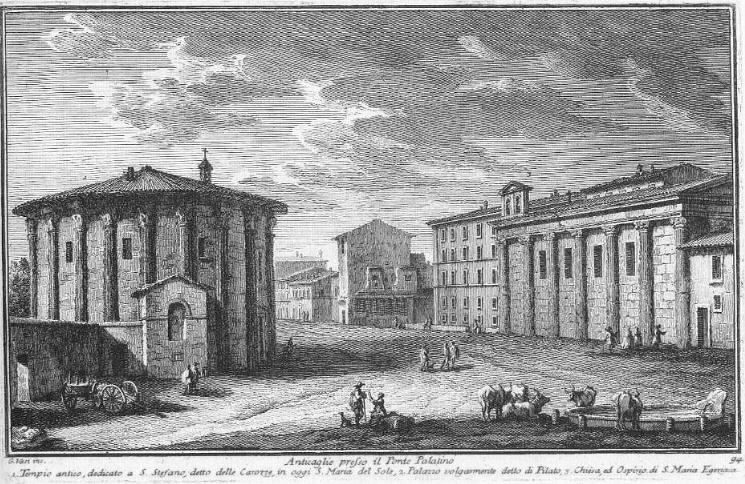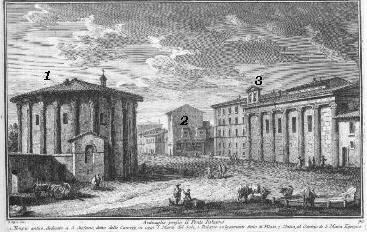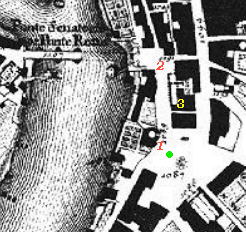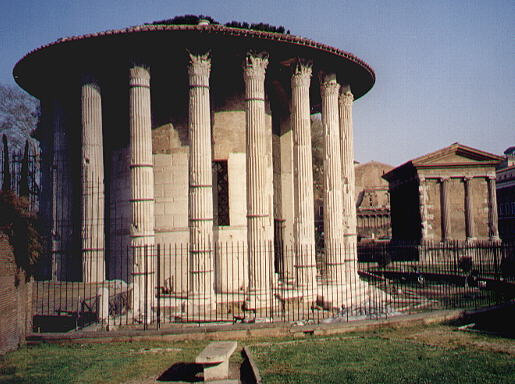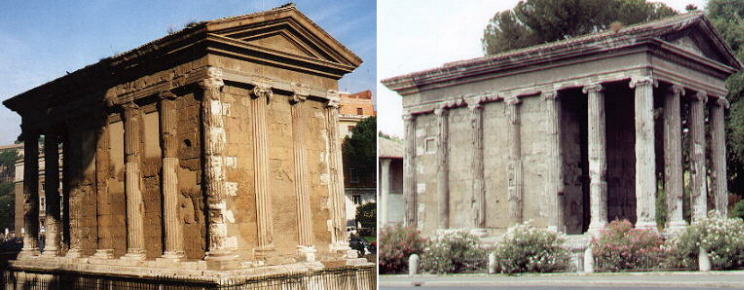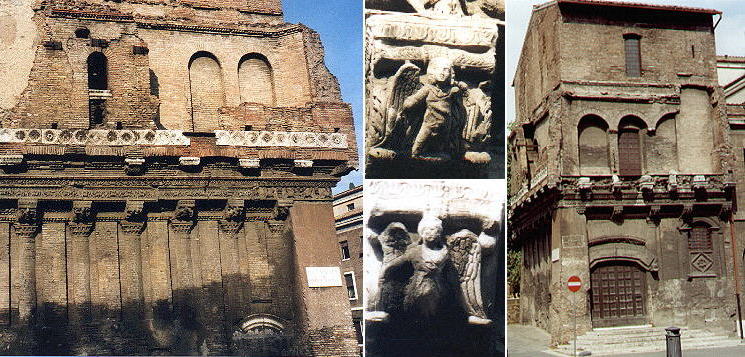  Anticaglie presso il Ponte Palatino (Book 5) (Map C3) (Day 5) (View C9) (Rione Ripa) In this page:
Anticaglie (in today's Italian Antichità) means antiquities
and this is one of the few plates with an explicit ancient Rome subject. The view is taken from the green dot in the small 1748 map here below.
In the description below the plate Vasi made reference to: 1) Roman Temple, then called S. Stefano delle Carrozze and today (in 1754) known as S. Maria del Sole;
2) Palazzo di Pilato; 3) S. Maria Egiziaca.
The area is also shown in the plate of S. Maria in Cosmedin and in a View from the River.
The two Roman Temples are now free from the additions which for many centuries made them small and uninteresting churches. Vasi's perspective as in many other cases expanded quite a lot the space between buildings.
This is one of the oldest temples in Rome (2nd century BC) and is called also Temple of Fortuna Virilis (a name which is much more appealing!). The temple of Vesta and the drinking trough are shown in the plate of S. Maria in Cosmedin.
This interesting building also called casa di Cola di Rienzo is actually
a medieval house of the Crescenzi family, most likely a tower commanding
the river passage, built using some fragments of Roman ruins. The side
shown by Vasi has some very interesting medieval capitals (see also my background).
Next plate in Book 5: Ponte Rotto Next step in Day 5 itinerary: Ponte Rotto Next step in your tour of Rione Ripa: Ponte Rotto
Go
to |
All images © 1999 - 2003 by Roberto Piperno. Write to romapip@quipo.it
